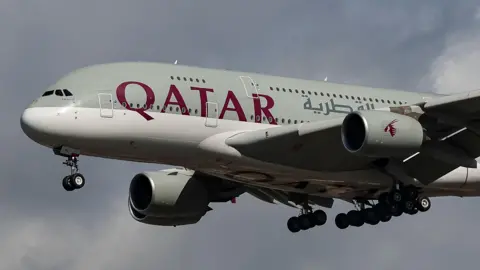The ongoing conflict between Israel and Iran has created significant disruption in the Middle East aviation sector, leading to numerous flight cancellations and rerouting as tensions escalate. The situation became critical when Qatar’s Doha airport, a significant regional hub, halted its operations following missile attacks launched by Iran targeting a U.S. military base within its territory. This military response was explicitly identified by Iran as retaliation for recent American strikes against its nuclear installations.
The repercussions of this escalation have been felt broadly, impacting various airlines. Major hubs like Dubai’s airport, which is renowned as one of the busiest airports globally, temporarily ceased operations, compounding the travel chaos. Passengers there faced further delays and cancellations as flight operations were uncertain. Numerous airlines, exceeding a dozen, have canceled flights to diverse destinations in the region amid escalating hostilities.
In a related development, Air India announced a complete suspension of its operations to the Middle East, along with flights to North America’s eastern coast and Europe. Similarly, Japan Airlines has canceled its services from Tokyo to Doha. The central role that the Gulf region plays in global air travel cannot be overstated—airports in Dubai and Doha handle close to 400,000 passengers daily, with Abu Dhabi contributing an additional 80,000 travelers. These airports serve as vital stopover points for long-haul flights connecting passengers between Europe and Asia or Australia.
As tensions persist, both Israel and Iran have yet to substantiate claims regarding a potential ceasefire communicated through social media by U.S. President Donald Trump. This lack of confirmation leaves the operational landscape for airlines even more uncertain.
Stranded passengers at Doha airport have found themselves in difficult conditions, with reports detailing that many were trying to secure food and bedding while awaiting updates on when flights might resume. Rob Liddle, a BBC staff member caught in this predicament while traveling to Dhaka, Bangladesh, recounted a scene marked by anxiety as missiles were reported overhead. Although fears ran high initially, he noted that the atmosphere later turned relatively calm.
Expert opinions highlight the severe implications of such conflicts on air travel. Aviation consultant Tim Atkinson remarked that disruptions like these fundamentally alter established operational norms, leading to extended delays not just for individual flights, but for entire flight schedules. He pointed out that the closure of Qatar’s airspace would trigger extensive disruption, given the interconnected nature of air travel. Another aviation expert, John Strickland, warned that forwarding delays can significantly elevate operational costs for airlines, chiefly due to the increased fuel consumption arising from longer flight routes. He also mentioned that the legal rest requirements for crew could complicate scheduling, potentially stranding aircraft.
Amid the conflict, safety concerns have escalated as various governments have issued travel warnings against specific regions, compelling some travelers to reconsider their plans. Decisions regarding flying paths to certain destinations will likely be made on an evolving basis, responding to the on-ground realities.
Historically, air travel across conflict zones can be perilous. According to aviation risk advisory firm Osprey Flight Solutions, there have been six unintentional shoot-downs of commercial aircraft, accompanied by three near-miss incidents since 2001. One noteworthy tragedy was the downing of Malaysia Airlines Flight 17 by Russian-backed forces in Ukraine in 2014, which claimed the lives of all 298 passengers on board.
The complicated dynamics have been exacerbated by the closure of vast sections of vital airspace resulting from the Israel-Iran conflict. With commercial flights now actively avoiding airspace over Iran, Iraq, Lebanon, Syria, and Jordan, the once-busy flight corridor between Asia and Europe—consisting of approximately 1,400 daily flights—is feeling the pressure. Now, airlines must reroute these flights either over Turkey or southward over Saudi Arabia, adding further strain to an already beleaguered aviation infrastructure.











